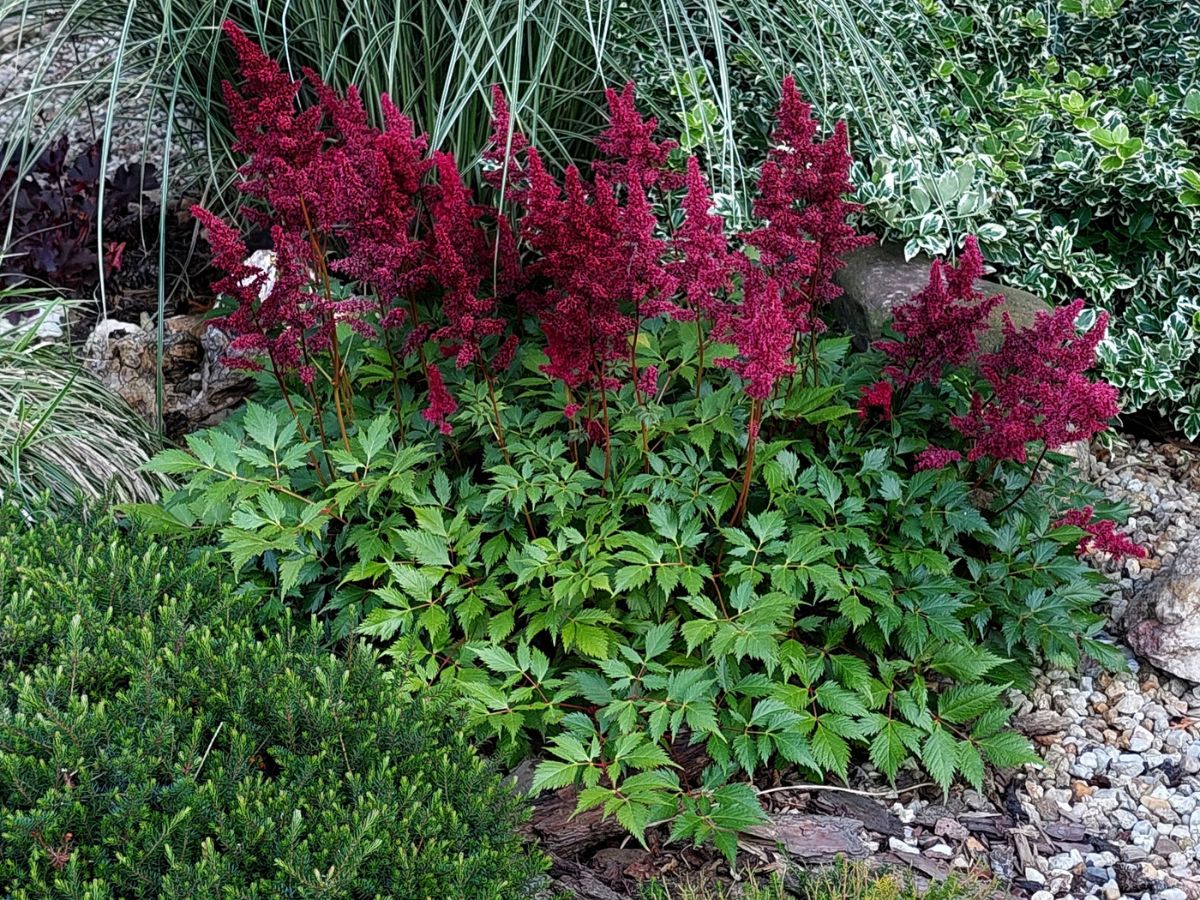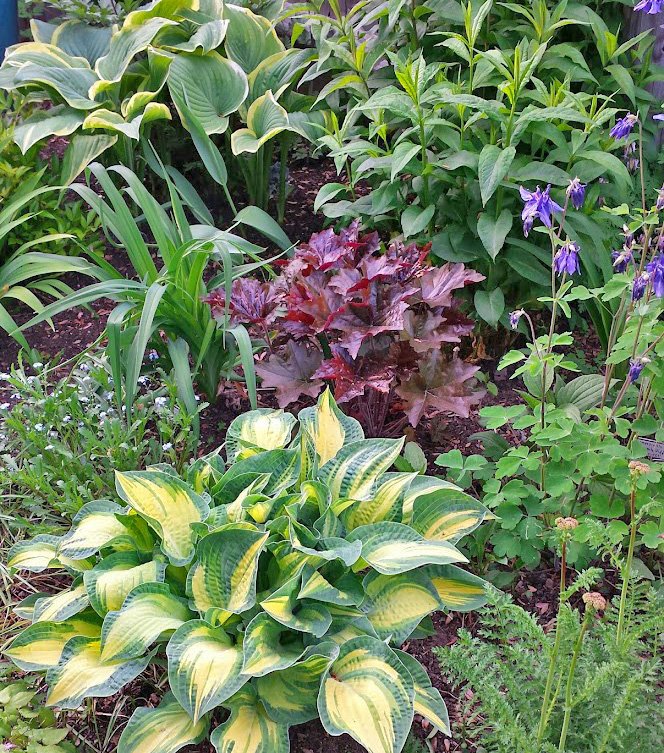Ivy Companion Plants That Will Make Your Garden Pop
Ivy is a versatile plant that can be used in a variety of ways in the garden. It can be grown as a groundcover, a climber, or even a container plant. Ivy is also relatively easy to care for, making it a good choice for even beginner gardeners.
One of the best things about ivy is that it can be paired with a wide variety of other plants. This makes it a great way to add interest and variety to your garden. When choosing companion plants for ivy, there are a few things to keep in mind. First, consider the growing conditions of both plants. Ivy prefers moist, shady areas, so you'll want to choose companion plants that have similar needs. Second, think about the aesthetic of your garden. Do you want to create a lush, green space? Or are you looking for something with more color and contrast?
Here are a few of the best companion plants for ivy:
- Ferns: Ferns are a classic companion plant for ivy. They both prefer shady, moist areas, and they can create a lush, green backdrop for ivy's trailing vines. Some good varieties of ferns to pair with ivy include maidenhair fern, Japanese painted fern, and Christmas fern.

- Hostas: Hostas are another great choice for companion plants for ivy. They come in a wide variety of colors and sizes, so you can find one that will complement the ivy in your garden. Hostas also prefer shady areas, and they can help to suppress weeds that might compete with ivy.
- Liriope: Liriope is a low-maintenance plant that is tolerant of shade and drought. It has grassy leaves and spikes of blue or purple flowers in the summer. Liriope can help to fill in empty spaces in your garden and provide contrast to the green leaves of ivy.

- Heucheras: Heucheras are colorful plants with heart-shaped leaves. They come in a variety of colors, including red, orange, yellow, and pink. Heucheras prefer partial shade and moist soil. They can help to add color and interest to your garden, and they can also help to suppress weeds.
- Astilbe: Astilbe is a delicate plant with feathery leaves and clusters of pink, white, or purple flowers. It prefers moist, shady areas. Astilbe can help to add a touch of elegance to your garden, and it can also help to attract butterflies and other pollinators.

These are just a few of the many companion plants that you can pair with ivy. When choosing companion plants, be sure to consider the growing conditions of both plants, as well as the aesthetic of your garden. With a little planning, you can create a beautiful and inviting garden that features ivy and its many companion plants.
English ivy is a beautiful and versatile plant that can be grown indoors or outdoors. It's also a relatively low-maintenance plant, making it a great choice for busy gardeners. But did you know that there are certain plants that can benefit from being grown alongside English ivy? These are known as companion plants, and they can help to improve the health and growth of both plants.
Some of the best companion plants for English ivy include:
- Ferns: Ferns and English ivy both enjoy similar growing conditions, such as shade and moist soil. They can also help to create a lush, green landscape in your garden.
- Hostas: Hostas are another wonderful companion plant for English ivy. They have beautiful foliage that can add interest and contrast to your garden.
- Liriope: Liriope is a hardy plant that can tolerate a wide range of conditions. It's also a good choice for attracting pollinators to your garden.
- Heucheras: Heucheras are known for their colorful foliage. They can add a pop of color to your garden and help to attract butterflies and other beneficial insects.
If you're looking for more information about ivy companion plants, I recommend visiting Gardenia Inspiration. This website has a wealth of information on the topic, including a list of the best companion plants for English ivy, as well as tips on how to plant and care for these plants.
FAQ of ivy companion plants
- What are some good companion plants for ivy?
Ivy is a versatile plant that can be grown in a variety of conditions. However, some plants are better suited to be companion plants than others. Here are a few good options:
* Hostas are shade-loving plants that can tolerate the same amount of moisture as ivy. They also have similar leaf shapes and colors, which can create a cohesive look in your garden.
* Azaleas and rhododendrons are acid-loving plants that can thrive in the same soil conditions as ivy. They also add a splash of color to your garden in the spring and summer.
* Clematis is a vining plant that can climb over ivy. It produces beautiful flowers in the spring and summer, and it can help to provide some much-needed shade for ivy in hot climates.
* Smilax is another vining plant that can climb over ivy. It produces white flowers in the spring, and it can help to add some privacy to your garden.
* Virginia creeper is a native North American vine that can grow up to 100 feet long. It is tolerant of a variety of conditions, and it can help to provide some winter interest in your garden.
- What are some plants that should not be planted near ivy?
There are a few plants that should not be planted near ivy, as they can compete for resources or even harm the ivy plant. These include:
* Trees can shade out ivy and prevent it from getting enough sunlight.
* Large shrubs can crowd out ivy and prevent it from growing.
* Other vines can compete with ivy for nutrients and water.
* Plants with aggressive root systems can damage the roots of ivy plants.
* Plants that are susceptible to the same pests or diseases as ivy can make it more difficult to control these problems.
- How much space should I leave between ivy and other plants?
The amount of space you need to leave between ivy and other plants will depend on the size of the plants and the amount of sunlight they need. In general, you should give ivy at least 12 inches of space on all sides. This will give it enough room to grow and spread without crowding out other plants.
- How can I keep ivy from growing too quickly?
If you find that your ivy is growing too quickly, there are a few things you can do to control its growth. One option is to prune it regularly. You can also trim back the roots of the plant to limit its spread. Finally, you can plant ivy in a container with a limited amount of soil. This will help to restrict the amount of water and nutrients the plant can access, which will slow its growth.
- What are some tips for planting ivy with other plants?
When planting ivy with other plants, there are a few things you should keep in mind. First, make sure that the plants have similar water and sunlight requirements. Second, consider the size of the plants and how much space they will need to grow. Finally, plant the ivy in a spot where it will not be shaded by other plants.
Image of ivy companion plants
- Hosta is a shade-loving plant that can help to suppress weeds and provide a backdrop for the ivy.
- Astilbe is another shade-loving plant that blooms in late summer and fall. It can help to add color and interest to the ivy planting.

- Ferns are a classic companion plant for ivy. They can help to add height and texture to the planting, and they also require similar growing conditions.

- Heuchera is a hardy perennial that comes in a variety of colors. It can help to add color and interest to the ivy planting, and it also tolerates shade.
- Saxifrage is a low-growing plant that can help to fill in the spaces between the ivy vines. It also blooms in early spring, adding a splash of color to the planting.

Post a Comment for " Ivy Companion Plants That Will Make Your Garden Pop"